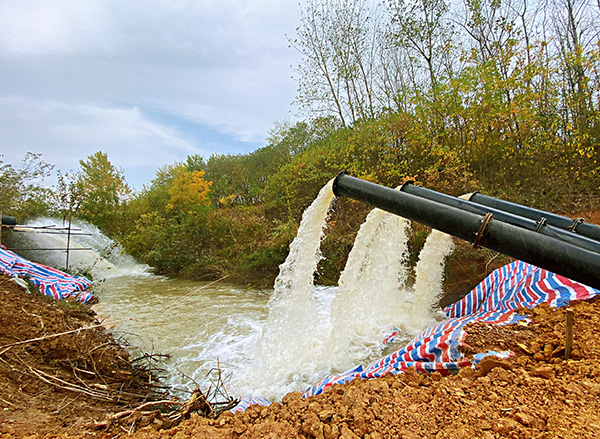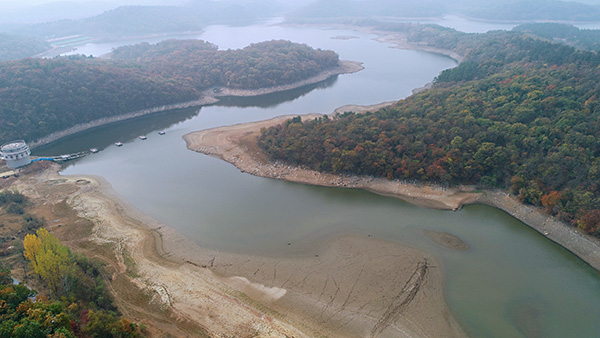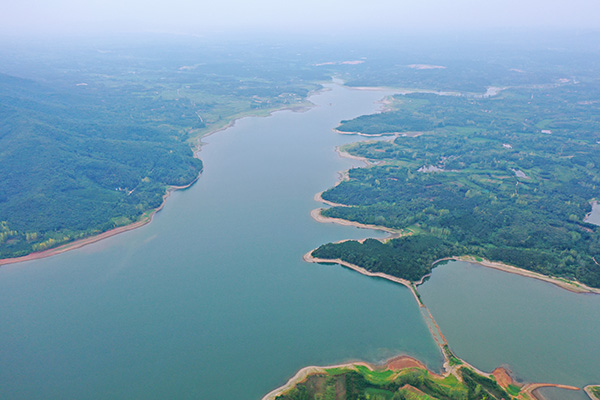Anhui suffered the worst summer and autumn drought in recent 40 years, and 700,000 people in Chuzhou and other places were short of water.

Quanjiao County Water Conservancy Bureau set up a temporary pumping station to reserve source water for city and county waterworks. Quanjiao county news ketu
This year, Quanjiao County, Anhui Province suffered a once-in-60-year drought, and the water level of Huanglishu Reservoir continued to decline. Recently, the Chuzhou Flood Control and Drought Relief Headquarters issued the opinion of "Diversing the River into the Chu River", and the Quanjiao County Water Conservancy Bureau diverted water to fight drought.
Yuan Changqing, director of the Water Conservancy Bureau of Quanjiao County, said, "The so-called diversion of the Yangtze River into the Weihe River means that the Yangtze River water is first introduced into the Weihe River, and it is sent up by the four-stage pumping station we set up, and finally the water is sent to the second water plant in Quanjiao County and the third water plant in Chuzhou City."

Overlooking Huanglishu Reservoir in Quanjiao County, Anhui Province, a large area of water surface has dried up to the bottom. Quanjiao county news ketu
The Paper learned from the news department of Quanjiao County that the total rainfall in the six months before and after the flood season was 372 mm, which was more than 50% less than the average of 715 mm in the same period of many years. The total storage capacity of 104 reservoirs and ponds in the county was 60% less than that in the same period of last year, and the bottom water was seriously insufficient. In particular, the water storage capacity of Huanglishu Reservoir, Machang Reservoir and Sanwan Reservoir is seriously insufficient.
It is reported that the main forms of decentralized water supply in this county are shallow well water and mountain spring water. The continuous drought has caused the well water and mountain spring water in some remote mountainous areas of this county to dry up, which has caused difficulties for drinking water for 626 villagers in local towns such as Machang Town and Shizi Town.
At 10: 00 am on November 9, Anhui Flood Control and Drought Relief Headquarters upgraded the emergency response level of drought relief to level III.

Huanglishu Reservoir in July 2019. Photo courtesy of Shen Guo, Chief of the News Section of Quanjiao County
According to the information department of the county, since October, the water level of Huanglishu Reservoir, which is called "Quanjiao People’s Water Tank" in the county, has been continuously declining, resulting in the shortage of water supply for nearly 700,000 urban residents and rural population in Chuzhou and Quanjiao County.
Xiwang Water Plant in this county has been taking water from Daishan Lake, but it can’t get water because of the low water level in Daishan Lake. Liu Guoxiang, the person in charge of Xiwang Waterworks, said, "30,000 people are facing waterless drinking, and we are in a hurry. The county water conservancy department coordinated the water conservancy department of Feidong County and gave us an earth dam more than 80 meters long and more than 30 meters wide in the lower reaches of Daishan Lake, which solved our water intake problem."
On October 18th, Chuzhou City issued the "Implementation Opinions on Water Diversion from River to Chuhe", and the county started the emergency water diversion work.
The head of the news department of Quanjiao County told The Paper that the emergency water replenishment plan for the Quanjiao section of "Diversion from the River to the Chu River" will cost about 14 million yuan, and it is expected that the project will come into play in late November.
According to Xinhua News Agency, it was learned from the office of Anhui Flood Control and Drought Relief Headquarters on November 12th that Anhui Province is suffering from the worst drought in summer and autumn in recent 40 years. 1452 reservoirs in the province dried up. Anhui province has sent more than 30 working groups to guide grass-roots drought relief.